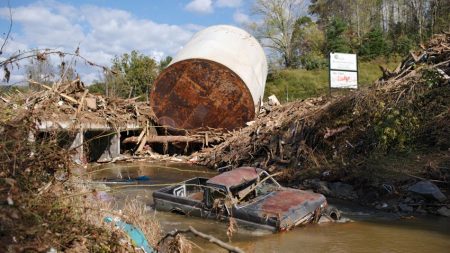Asheville’s Historic Owens-Bell Park
Neighborhood park showcases diverse, vibrant community.

At just under an acre, Owens-Bell Park proves even small spaces can reflect the big community spirit of those who live nearby.
This neighborhood park showcases the diverse personalities of the residents and business owners who created a vibrant community.
When the railroad came to Asheville in the 1880s, factories began appearing along tracks by the river. At the time, the area was referred to as West End because it was the westernmost developed part of the growing city. As houses for railroad and factory workers were built, neighborhoods that now make up West End Clingman Avenue Neighborhood (WECAN) came to life. Originally called Depot Street, Clingman Avenue became a bustling thoroughfare served by a trolley route taking people from the railroad depot to Aston Park and Pack Square.
By the 1920s, it had emerged as a middle-class neighborhood for Black residents living in Queen Anne and Bungalow style homes, with several family-owned businesses including a grocery store, bakery, drug store, hospital, churches, and school on Hill Street.
West End, Prospect Park, Clingman Avenue, and other districts remained prosperous through the 1940s until the Haywood Road Connector razed dozens of homes, creating dead-end streets. The Smoky Park Bridge (now Capt. Jeffrey Bowen Bridge) cut through Chicken Hill, eliminating several houses and small businesses. The expansion of Hilliard Avenue, factory closures, and sell-off of railroad properties stunted development, and no new houses were built for 50 years.
In the 1990s, many in Asheville began to recognize the important connection WECAN served between burgeoning downtown revitalization and riverfront redevelopment. Mountain Housing Opportunities (MHO), founded in 1988 to address the lack of quality affordable housing in Asheville, viewed WECAN as an ideal location for a series of projects and renovations that added several residential units to the neighborhood in the early 21st century.
MHO worked with established residents and new arrivals to design a park that would be donated to Asheville Parks & Recreation (APR) as a place to connect with neighbors and experience nature.
Hundreds of volunteer hours would transform a ravine overgrown with kudzu, dead or dying trees, and non-native plants into a retreat with artistic benches, trees to provide shade, and a cultural garden with heritage plants from those who live in WECAN.
Tight-fitting boulders, shrubs, and granite curbstones from within the neighborhood were used to form a restored wetland ecosystem to manage runoff, reduce pollution, and enhance water quality. An industrial metal sign was installed to emphasize the connection to factories that once peppered the nearby river bank.
John H. Owens and Joseph D. Bell
As the unnamed park neared completion, utilizing the name of an individual who significantly contributed to the neighborhood was mentioned as a way to highlight WECAN’s past. The decision was made to honor two very distinguished gentlemen who lived in the neighborhood years prior.
John H. Owens moved into a house on Clingman Avenue in 1920 and owned a grocery store next door that he had opened the year before. With Owens Grocery Store on the north end and a barbershop on the other, the building acted as a community social space. It was located catercorner from the present-day park and is listed as the only surviving building that housed a business on Clingman Avenue.
Remembered fondly as a colorful character, Joseph D. Bell was a war veteran. As a retiree, he would often talk to young people in the neighborhood, emphasizing the need to stay in school and pursue careers. Many of these children went on to attend college and become professionals such as doctors, lawyers, and business owners.
Owens-Bell Park was dedicated on September 4, 2006 and donated to the City of Asheville the following month. Visitors to the park will find a small pavilion, benches, a short paved loop, bridge, mulched trail, gardens, and large photos of the men for whom the park is named.
This article is part of Park Views, a weekly Asheville Parks & Recreation series that explores the history of the city’s public parks and community centers—and the mountain spirit that helped make them the unique spaces they are today. Read more from the series and follow APR on Facebook/aprca, on www.instagram.com/ashevilleparksandrecreation, or visit www.ashevillenc.gov/parks.






